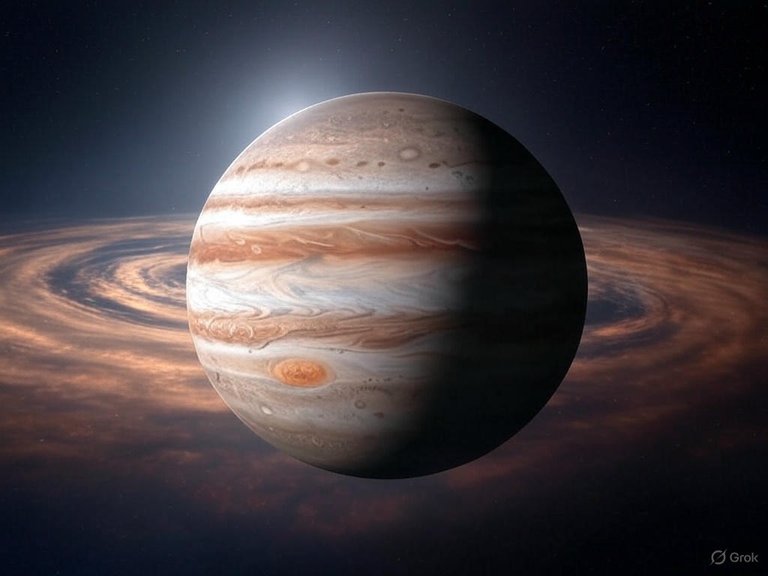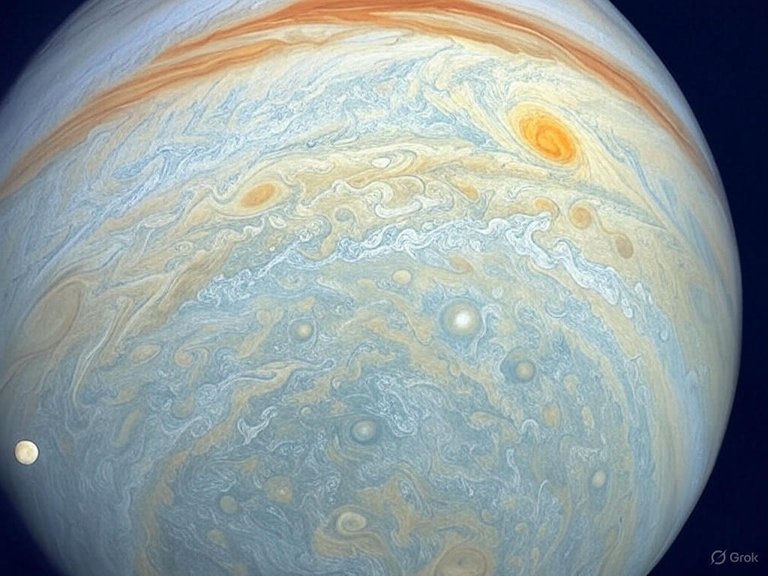Jupiter, A Failed Star
Jupiter, A failed Star
Jupiter is undoubtedly the latest planet in the solar system, it boasts a diameter of 139, 000 kilometers and is a gas planet of mostly hydrogen and helium it boasts a stunning 95 Moons and a faint ring system and is home to the great Red spot, the largest and longest lasting storm in our solar system.
Jupiter formed about 4.6 billion years ago from the same protoplanetary disk as the Sun, a swirling cloud of gas and dust. The Sun gobbled up most of the material, achieving the ~1 solar mass (333,000 Earth masses) needed to ignite hydrogen fusion. Jupiter, with only 0.001 solar masses (318 Earth masses), missed the mark for several reasons:

Insufficient Mass: To sustain hydrogen fusion like a main-sequence star, a body needs ~0.08 solar masses (80 Jupiter masses). Jupiter’s mass is orders of magnitude too low. Even for deuterium fusion, the threshold for brown dwarf status, it needed ~13–15 Jupiter masses.
Competition with the Sun: The Sun’s rapid accretion dominated the disk, starving Jupiter of additional gas. Once the Sun began fusion, its solar wind cleared out leftover material, halting Jupiter’s growth.
Core Formation: Jupiter was likely formed via core accretion, where a rocky/icy core (~10–20 Earth masses) pulled in a massive gaseous envelope. This process was too slow to compete with the Sun’s collapse, unlike stars that form directly from collapsing gas clouds.

If Jupiter had accumulated enough mass to become a star or brown dwarf, the solar system would be radically different:
Brown Dwarf Scenario (13–80 Jupiter Masses): At this mass, Jupiter could fuse deuterium, glowing faintly in infrared due to residual heat and limited fusion. It wouldn’t shine like a star but would be a warm, substellar object. Its increased gravity would disrupt the orbits of other planets, potentially ejecting smaller ones or tightening their paths. The asteroid belt might not exist, as its material would’ve been swept up or scattered.

True Star Scenario (80–100+ Jupiter Masses): If Jupiter reached full stellar status, it’d be a low-mass red dwarf, fusing hydrogen and emitting visible light. The solar system would become a binary star system
Jupiter’s "failure" to become a star is a feature, not a flaw. Its mass and position stabilize the solar system:
Shielding: Jupiter’s gravity deflects comets and asteroids, reducing impacts on Earth. Without it, life might not have flourished.
Planetary Dynamics: It anchors the orbits of other planets, preventing chaotic resonances. In a binary star system, this stability could vanish.

All images were generated by grok.
